![Bilgin Çelik, İttihatçılar ve Arnavutlar. II. Meşrutiyet Döneminde Arnavut Ulusçuluğu ve Arnavutluk Sorunu [The Unionists and the Albanians. Albanian Nationalism and the Albanian Question in the Second Constitutional Period]. Istanbul: Büke Kitapları](/api/image/getissuecoverimage?id=picture_2015_22003.jpg)
We kindly inform you that, as long as the subject affiliation of our 300.000+ articles is in progress, you might get unsufficient or no results on your third level or second level search. In this case, please broaden your search criteria.
![Bilgin Çelik, İttihatçılar ve Arnavutlar. II. Meşrutiyet Döneminde Arnavut Ulusçuluğu ve Arnavutluk Sorunu [The Unionists and the Albanians. Albanian Nationalism and the Albanian Question in the Second Constitutional Period]. Istanbul: Büke Kitapları](/api/image/getissuecoverimage?id=picture_2015_22003.jpg)
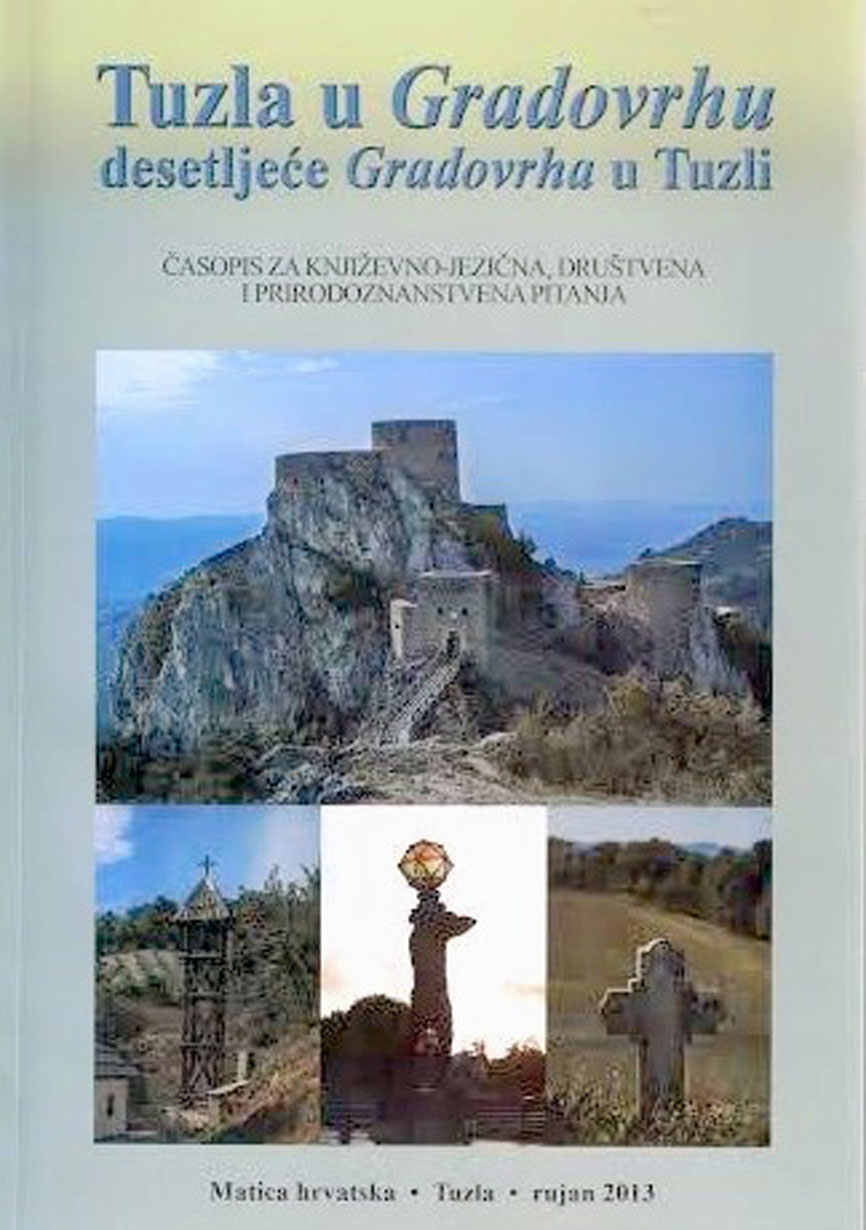
U radu je dat pregled dosadašnje historiografi je koja se direktno ili indirektno bavi pitanjem historije Tuzle u osmanskom periodu. Ukazano je i na različite izvore koji su značajni za proučavanje Tuzle u vrijeme Osmanlija.Historiografija je prikazana kroz tri tematske cjeline. Jedan dio se odnosi na literaturu i izvore koji govore o političkim prilikama u Tuzli tokom osmanske vladavine, drugi na kulturna, obrazovna i vjerska pitanja i treći je historiografi ja o procesu razvoja Tuzle. Za svako navedeno pitanje, autor je dao ocjenu stepena istraženosti te probleme sa kojima su se historičari susretali u istraživanju. Nedovoljni sistemski poticaj istraživanja historije Bosne i Hercegovine predstavlja glavnu prepreku daljeg razvoja historiografije, čime je nova spoznaja o historiji Tuzle svedena na uske okvire.
More...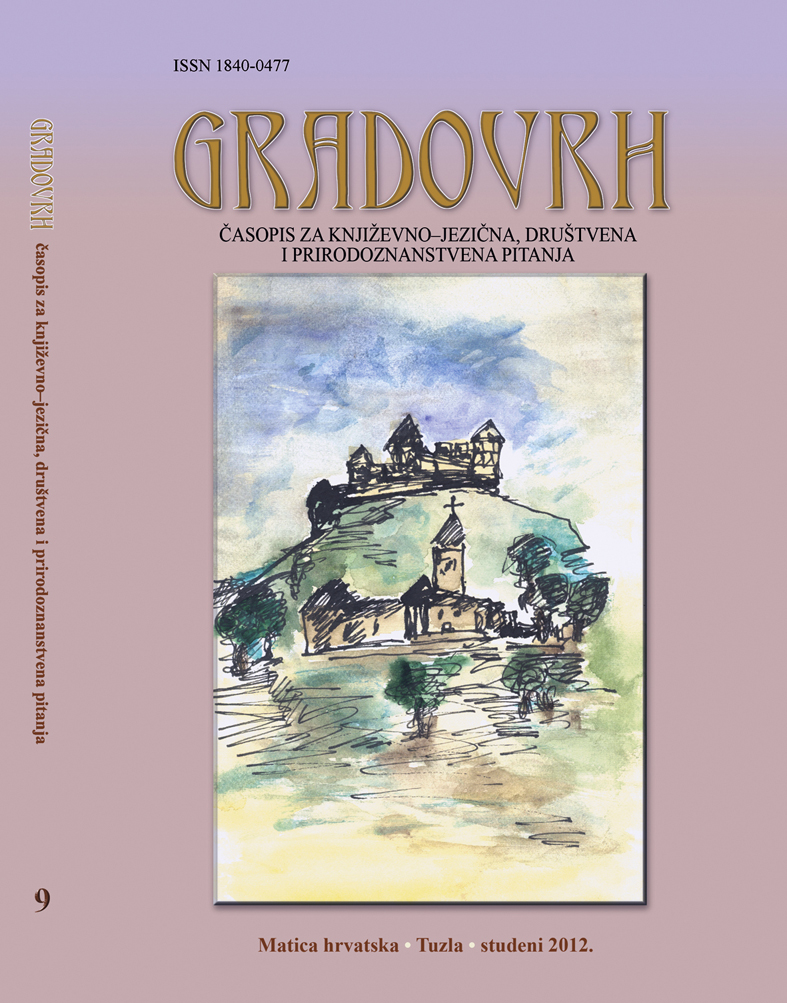
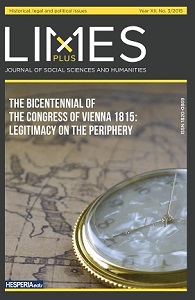
This paper shows and analyses preparations for Serb uprising against Ottoman rule in 1840 and 1841. It explains Niš rebellion of 1841 was just a part of uprising planned for much wider area, but accomplished only in The sancak of Niš. The role of prince Nikola Vasojević in uprising preparations was indicated. How the uprising was financed and what was the role of prince Miloš Obrenović remain unanswered questions. The paper is mostly based on Serbian, Russian, British, French and Austrian sources.
More...
Pitanja osmanskog feudalizma i širenja islama predstavljaju dva najznačajnija pitanja u historiji Osmanske carevine na prostorima evropskog kontinenta. Pitanje osmanskog feudalizma je pitanje društveno-ekonomskog sistema koji je na tim prostorima vladao nekoliko stoljeća, a pitanje islamizacije predstavlja društvenu pojavu koja je ostavila najočiglednije posljedice na tim prostorima i nije u svojoj općosti strogo vezana za društveno-ekonomski sistem.
More...
27 Aralık 1852 tarihinde kaleme alınan ve Başbakanlık Osmanlı Arşivi ile Ankara’da Milli Kütüphane’de birer nüshaları bulunan lâyıha, Osmanlı Devleti’nin Karadağ üzerindeki egemenlik haklarını ispatlamaya yöneliktir. Lâyıhada Karadağ’ın Osmanlı hâkimiyetine geçişi ve Osmanlı Devleti’nin burada uyguladığı idarî ve malî sistemden tarihi belgelere gönderme yapılarak bahsedilmektedir. Ayrıca Karadağ prensinin siyasî ve ruhanî liderliğine ve Karadağlıların isyanlarına da değinilmektedir.
More...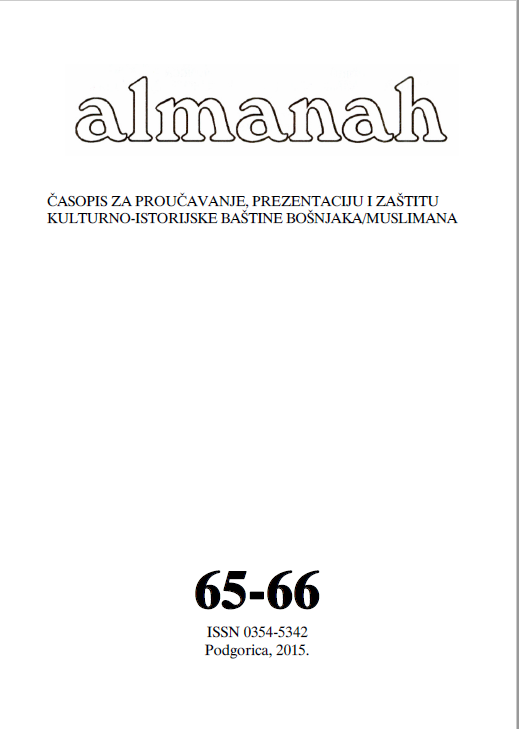
Jedna od najkompleksnijih istorijskih priča na Balkanu je ona o muhadžirima. Bilo da se radi o istoriografskim istraživanjima ili o romansiranoj predstavi (gdje su romani Huseina Bašića po mnogo čemu klasika), jednako je važno razumjeti ovo pitanje u društvenom totalitetu. Da bi se razumjela ova problematika nužno je raspolagati raznim oblastima znanja, ovladati brojnom referentnom literaturom, istražiti nove izvore, biti sposoban da razumiješ savremene vrijednosne sudove i slično. U svakom slučaju, interes za ovu temu logično održava i brojna populacija muhadžira koja danas živi u Turskoj, gdje se procjenjuje da 5-6 miliona stanovnika današnje Turske svoje porijeklo vuče sa Balkana. Normalno je da se novije i obrazovanije generacije muhadžira sve više zanimaju za svoje porijeklo i okolnosti koje su njihove pretke nagnale da promijene staništa. Međutim, primjetno je da niti u današnjoj Turskoj, niti u balkanskim državama ne postoji organizovan, naučni i kontnuiran pristup ovoj temi.
More...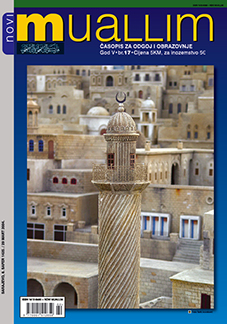
The role of the institution of Sheikh ul islamlika and Sheikh ul Islam was of a great importance in the Ottoman Empire. Tisequally applied to Bosnia i Herzegovina while it was a part of the Empire. It also directly affects its religious hierarchy, on the top of which was Rogatica-born Sheik Mehmed Refik effendi Hadžiabdić. Along with him, there were also other prominent and influential persons who held this title, i.e. Zenbili Ali Džemali Effendi,IbnKemal effendi,Ebu Suud effendi,Musa Kazim effendi and others.
More...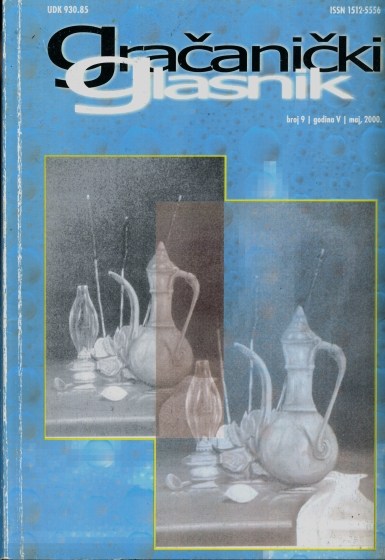
U vrijeme osmanske uprave u Bosni, Gračanica je ulazila u sastav zvorničkog sandžaka, odnosno od 1851. kajmakamluka. Na čelu sandžaka stajao je sandžak-beg koga je postavljao sultan na vrijeme od jedne godine. Ovaj sandžak je vrlo rijetko ustupan kao arpaluk bosanskom valiji. Od 1854. godine Austrija je otvorila svoju konzularnu agenciju i od tada su učestalije vijesti o prilikama u Posavini. S obzirom na to da su skoro svi izvještaji ove agencije sačuvani, to nam je kudikamo lakše pratiti zbivanja i sročiti cjelovitiju priču historije o sandžaku u cjelini i naseljima pojedinačno.
More...
The practice of holding birthday celebrations for sultans in the Ottoman Empire started during the reign of Mahmud II, and for the last seven Ottoman sultans, from Mahmud II to Mehmed VI, birthday celebrations were part of state protocol. The most visible and conspicuous of these celebrations were those held during the reign of Abdulhamid II. This can largely be attributed to the long reign of Abdulhamid II, who was sultan for 33 years, and that during his reign, these celebrations were meant to serve various social and political functions, extending beyond being simple rituals. This study examines the birthday celebrations held for Abdulhamid II in the capital, in the provinces and overseas, and aims to uncover their social and political implications.
More...
In the Ottoman Empire, the origins of the tradesmen organization go back to the Turkish-Islamic states. This system, which is widespread in the Ottoman cities, is in fact an extension or continuation of the Ahi organization in Anatolia. Since the foundation of the Ottoman State, the tradesmen organized in the cities continued to produce throughout the centuries within a certain discipline. In the resources, there are various valuable information about the tradesmen in Cyprus. One of the tradesmen branches operating in the Ottoman administration was the butchery. There was a special precaution for the butchery due to the production of the basic consumption goods of the people. Because of this special importance, they were strictly supervised by the administrators. The butchers who did not comply with the rules were be¬ing punished with various kinds of punishment. It is understood from the Nicosia Judicial Record that there were approximately 405 butchers in Cyprus. There is valuable information regarding the butcher tradesmen in the island during the Ottoman administration in the Şer’i Sicil. The narh (official price) also provide us with valuable information about the consumed meat types and their prices in Cyprus. It is also understood from the narh records that people generally prefer to consume the small ruminant animal’s meat. Besides, the various documents in the register have information about the activities of the butchers in Cyprus. It is learned from records that the butchers cooperate closely with some tradesmen branches like debbâg (tanner), çangar (shoemaker), haffâf (shoemaker), mumcu (chandler) who are also operating in Cyprus. Also, the slaughterhouse, which the butchers used in Nicosia, was among the income sources of the tombs of Hala Sultan. It is understood from the talks with the today’s butchers that the terminology related to the meat used by the butchers in the past is still in use. As a result, the butchers have made important contributions to the socio-economic history of the island.
More...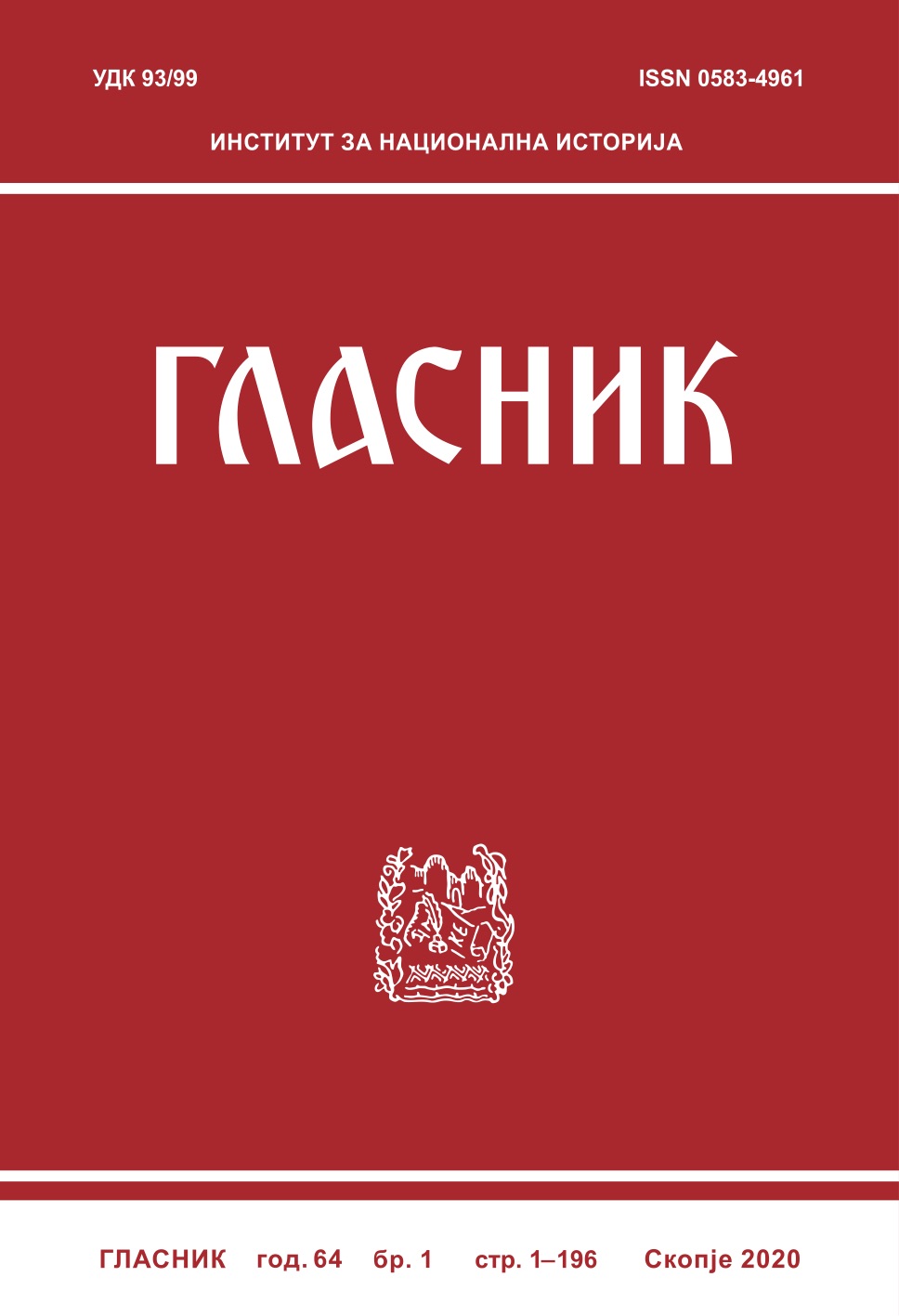
This text presents the history of the city of Skopje during the Ottoman rule and especially analyzing the administrative establishment of the Skopje Sandzak until the end of the 18th century. Based on previously unpublished archive material of Ottoman provenance, the text offers a list of governors of the Skopje Sandzak in the period from 1756 to 1791. Thus, for the first time, the names of the mutasarrifs of the Skopje Sandzak are presented, which gives the idea of how the administrative establishment of the Sandzaks functioned at that time on a wider territory. Also, the list of mutasarifs of the Skopje Sandzak shows that they were quite often replaced, indicating that the Ottoman Empire at that time had serious problems with stabilizing its power in the Balkan Peninsula, especially after several unsuccessful wars with Russia and Austria.
More...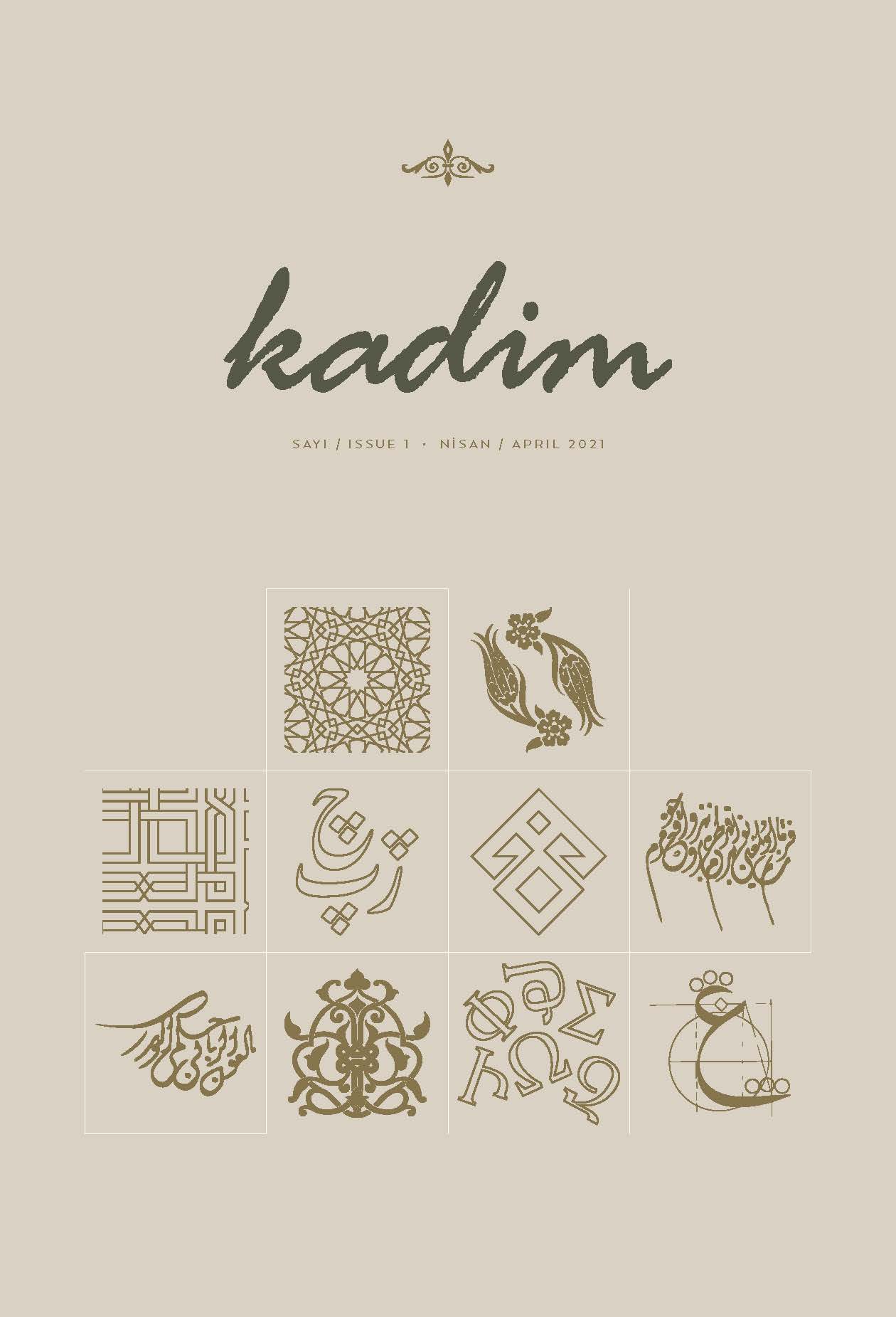
This article investigates a chronicle Kitāb-ı Tārīh-i Āl-i Osmān, also known as Rüstem Paşa Tarihi by discussing some misconceptions about its author and patron. In the classical period of the Ottoman Empire, several statesmen were engaged with the activity of authorship. Since Rüstem Pasha’s predecessor, Lutfi Pasha wrote a chronicle on the Ottoman history. This production creates an assumption and misleads researchers that the latter was the author of Kitāb-ı Tārīh-i Āl-i Osmān, partly due to an expression found in the original manuscript from the Austrian National Library. This study especially questions the validity of this attribution. To this end, it contextualizes Rüstem Pasha’s patronage and this work by meticulously analyzing the Austrian manuscript and comparing it with several copies. Thus, it claims that the work belongs to another productive figure of the time, Matrakçı Nasuh and Rüstem Pasha, rather patronizes the author to write the chronicle. This finding also reveals that Matrakçı Nasuh did not die in 1564 as recorded in the sources.
More...
This paper presents Aćim Jelić’s recollections of events which occurred in Kočani in August 1912, just before the outbreak of the First Balkan War. Jelić was a teacher, school administrator, and one of the important actors of the Serbian national movement in the Ottoman Empire. In this text the author comments on the events and people in Kočani, before and after the explosion of two bombs in the Kočani markets. Jelić’s memories represent a valuable historical source, which refers to an event that resonated with the European public. This historical source is in the legacy of Aćim Jelić’s grandson, Mr. Miroljub Todorović, a writer from Belgrade.
More...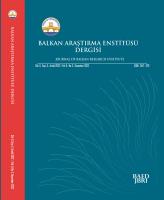
Inspection in the Ottoman Empire emerged as a product of modernization during the Tanzimat era. Civil inspectorship, on the other hand, was implemented only in Rumelia within the scope of Rumelia Reforms in 1896 but was abandoned in 1902. With the Second Constitutional era, civil inspectorship was recreated and its scope was expanded and inspectors were sent to Anatolia together with Rumelia. As one of the four civil inspectors appointed during this period, two of whom were non-Muslims, Haydar Beg worked in Anatolia and Rumelia for about four years between 1909-1913. As he was originally a Rumelian and therefore knew almost all the languages of the region, he was given very critical duties in Rumelia. Just before the Balkan Wars, Haydar Beg successfully overcame all important duties given to him. In this article, it is aimed to analyse the role of Haydar Beg in Rumelia through the Ottoman archival documents, contemporary newspapers, and journals and related literature.
More...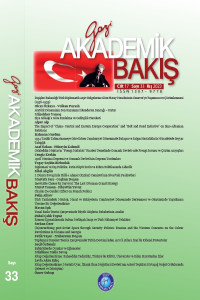
Today most scholar in the field, defines the concept of grand strategy as the allocation of a state’s resources to meet its main objectives. In history no exceptions all states had guiding strategy to grow, exist or survive within the international environment. Even though Ottoman Empire like all other ones in history, had never used the grand strategy term to define their overall purpose, most empire’s rulers set main objectives, established priorities, allocate resources and followed long term systemic plans in order to establish regional/global supremacy from fourteenth and eighteenth century successfully. However, their political/military/financial supremacy faded away when they were not able to renew the existing grand strategy according to the shifting international environment during the eighteenth century. This study examines the Ottoman’s new revised grand strategy had emerged during the first half of the nineteenth century in order to secure the survival of empire. Within historical context, this paper designed to discuss Mahmud II’s innovative and visionary grand strategic approach in detail. While doing it this study overall linked the centralization, westernization, Ottomanization and the balance of power policy in foreign affairs as the main component of renewed grand strategy. Last but not least this study presents an analysis of the attempt to reshape the empire’s late period grand strategy aim to outmanoeuvre stronger rivals in an anarchic international order shaped by European great powers.
More...
The article is concerned with a class of early modern Ottoman vessels, known as caramoussals. It reveals an ignored aspect of their past by providing evidence for the fact that these ships were owned, traded and used outside the boundaries of the Ottoman world. While historians have so far used available sources to determine the part played by caramoussals in Ottoman economic and military affairs, this paper refers to several neglected sources revealing the acquisition and capture of these vessels by Western Christians in order to reuse them. This explains their presence on the sea routes linking Western Europe to the Ottoman Empire, as well as on the domestic routes of some of the Mediterranean maritime powers, such as Venice. The sources analyzed here emphasize the topic as being relevant not only to Ottoman maritime history, but also to the history of early modern Mediterranean. Thus, they serve as an incentive to a comprehensive study of caramoussals within the framework of Mediterranean maritime history.
More...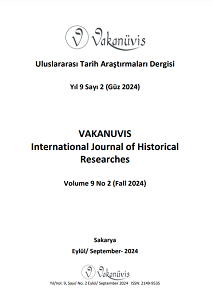
Trademark law in the Ottoman Empire started with the Trademark Law in 1871. The same law was updated with some additions in 1888. Although there is no information about images and signs that cannot be accepted as trademarks in the Ottoman trademark law of 1888, it is stated in Article 2 of the law that trademarks that violate security and morality will not be registered. Due to these concepts added to the regulation and whose scope is unclear, many trademark registration applications have been rejected, especially since the early 1900s. This study focuses on the examination phase of trademark registration applications based on Ottoman archive documents and the characteristics of the trademarks that are rejected as a result of the examinations. It is aimed to determine the rejection reasons of the units involved in the trademark registration processes and to determine the extent of the reflection of the political and social atmosphere of the Abdulhamid II, period on the brand signs. The main purpose of this article is to read the political implications of the separatist elements of the period and the perspective of the state through brands.
More...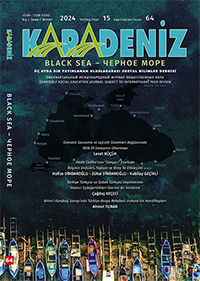
Verifying written sources, especially the works of the old chroniclers and specifying their historical and source study value is one of the main tasks of historical sciences. No complete A complete historical and source-scientific study of the works by Sekhnia Chkheidze, a Georgian historian of the of the XVII century and the first third of the XVIII century has not been carried out until now. Such a “delay” is partially caused by the attitude of Ivane Javakhishvili, the founder of the modern Georgian historical school, to the works of Sekhnia Chkheidze. Our goal is to study the reliability of the records by Sekhnia by means of comparison of the different kind of historical sources, records of Georgian and foreign authors and data from the works by Sekhnia Chkheidze. The article analyses the records of the author about the kingdom of Imereti history of XVII-XVIII centuries out of the mentioned extensive research. Georgian historiography is dominated by the view that the focus of Sekhnia Chkheidze's attention was only on the historical processes taking place in the Eastern Georgia, and he was not familiar with the political situation in the Western Georgia. On the basis of the cyclical source scientific research conducted by us, the present paper shows that S. Chkheidze was well aware of the political processes taking place in the Western Georgia, especially in the Kingdom of Imereti. Reportedly, Georgia was divided into several kingdom-prinicipalities in the II half of the XV century, it was a long process, first, Samtskhe-Saatabago, then Kakheti Kingdom separated from the united Georgia, later, Kartli and Imereti were also formed as separate kingdoms. The process of disintegration was deepend in the XVI century, Imereti Kingdom had started dividing into several prinicipalities like Samegrelo, Guria, Abkhazia and Svaneti in the second half of the 50s. Despite such a condition the fight for restoring of the country unity had never stopped. Sekhnia Chkheidze, treasurer and historian of the royal court of Kartli, could clearly see that Western Georgia faced the most difficult situation in the case of unification of the country. A chronicler highlights the attempt of progressive kings of Kartli (Vakhtang V, Giorgi XI, Archil and Vakhtang VI) to enhance and strengthen their influence on the whole region with support of Georgians from the Western Georgia.
More...
The Oriental studies, and therefore the Ottoman studies, has been for more then a century the subject of scientific research and there are several well-founded studies and articles on the subject. The most comprehensive account of entire opus of Fehim Bajraktarević, and thus his Ottoman studies, had originated from the pen of A. Mitrovic in a monograph dedicated to this great Orientalist. However, the editions of Ottoman documents translated and prepared for publication by Professor Bajraktarevic were not the subject of further elaboration of the Ottoman historians, although he had published some extremely valuable documents. In this paper, we tried to show the relevance of the documents he had prepared, on the example of the Ottoman documents from the monastery of Sv. Trojica in Pljevlja. Those documents expertly prepared by F. Bajraktarević, enable the modern researchers to point out their deep knowledge and use value. Since in 2021 was published court register for Pljevlja (dated the beginning of the 19 th century), the author of this paper has tried to complete the data from the Bajraktarević`s collection with those immensely important documents.
More...